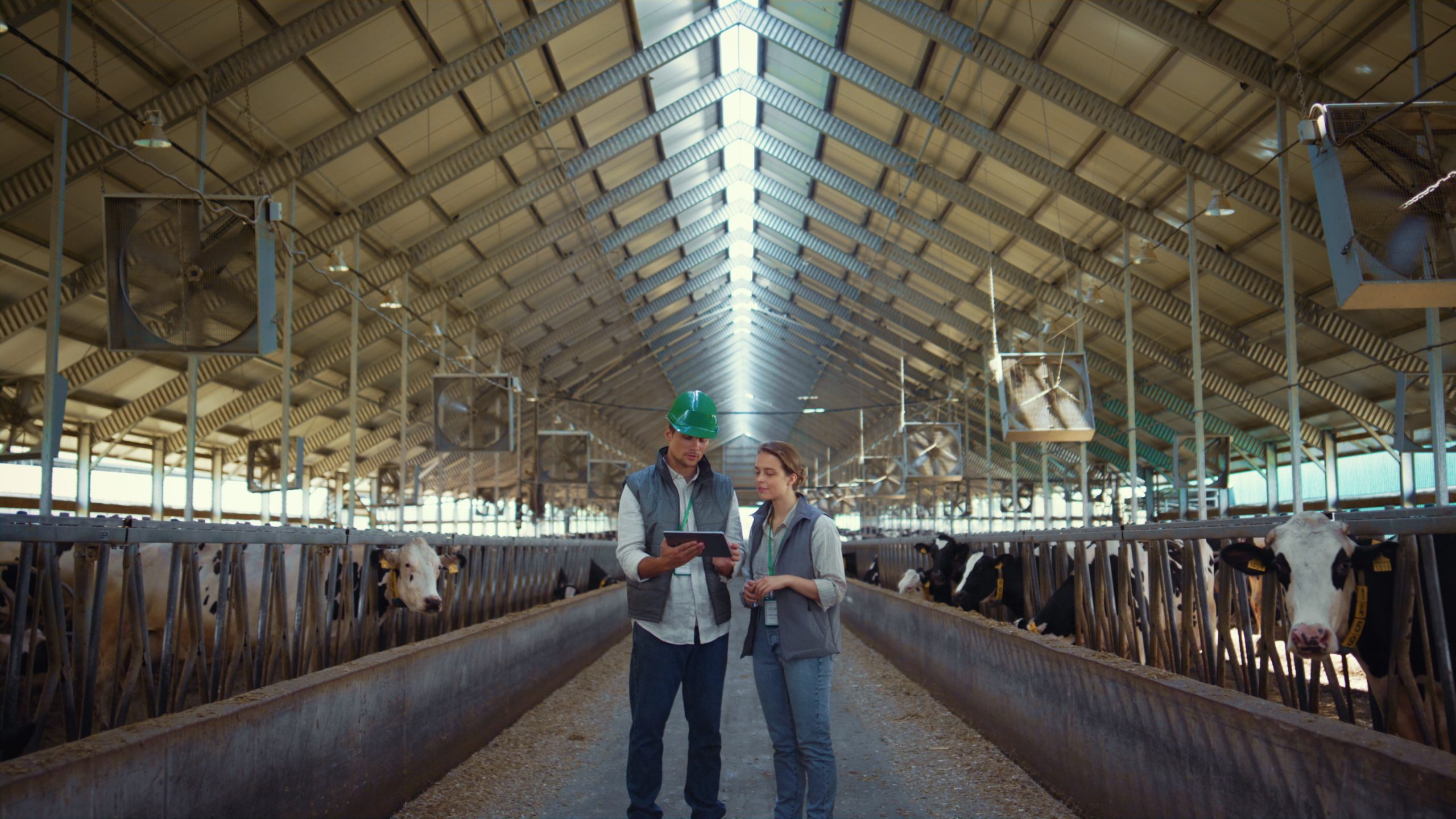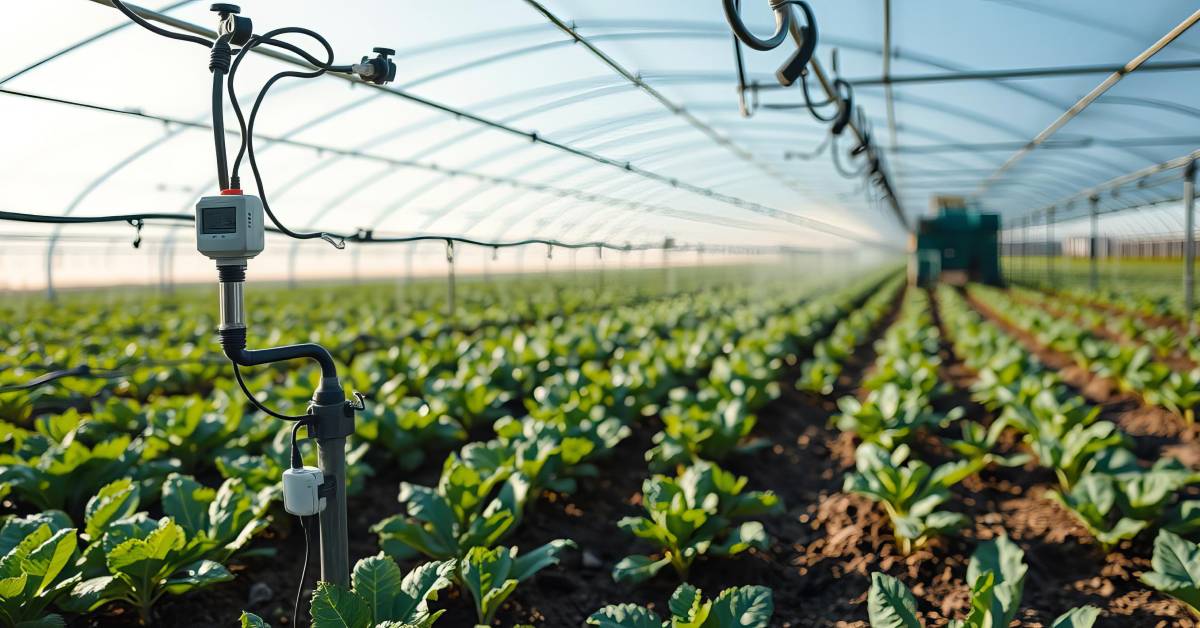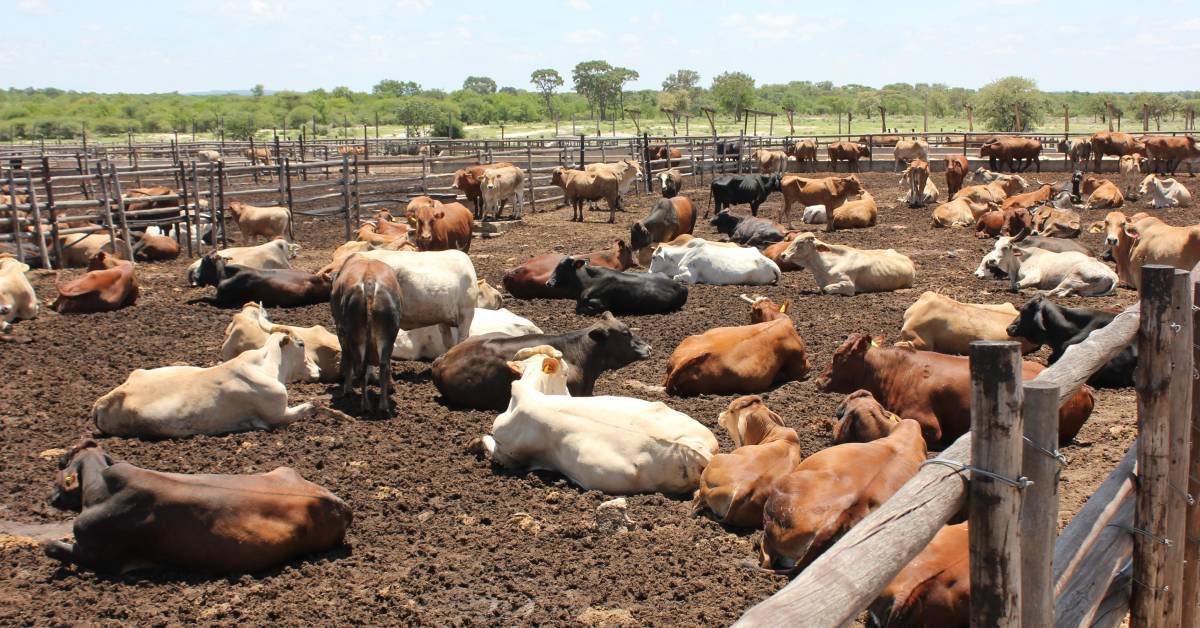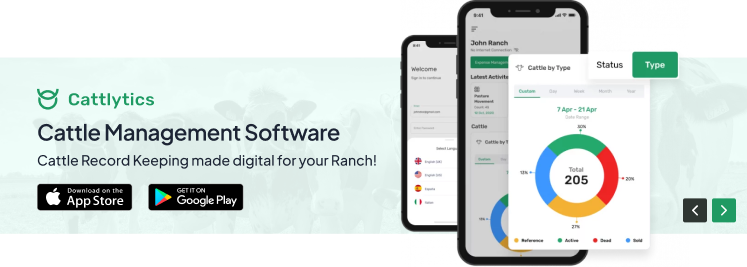The global economy relies heavily on the beef industry, of which feedlot operations are a significant component. USDA statistics indicate that the annual beef output in the United States alone is around 26 billion pounds, much of which comes through feedlot operations. The majority of this meat is obtained from intensive animal feeding programs.
Studies show that advanced feedlot monitoring systems may reduce cattle mortality rates by 10% to 15%. It can significantly improve feedlot operations’ overall productivity and sustainability.
This article will examine what a feedlot operation entails and how technology advances feedlot management practices.
What is a Feedlot?
Feedlots, or animal feeding operations (AFOs), are fenced areas where cattle are confined, fed a grain diet, and prepared for slaughter. As classified by the EPA, these concentrated animal feeding operations (CAFOs) bring together animals, feed, and produce on limited land, differentiating them from traditional grazing practices.
The history of cattle feedlots goes back to the mid-20th century. As the demand for beef increased, the trend of feedlots in cattle farming started growing. Over time, these facilities grew in scale, containing tens of thousands of animals. Today, they face criticism for their environmental impacts, prompting the need for improved design and management practices. Despite the dominance of grain finishing in feedlots, challenges persist in recognizing well-managed operations and promoting sustainable alternatives, such as grass-based systems. The beef industry balances efficiency, environmental responsibility, and consumer preferences in navigating these complexities.
Everything About Feedlot Operation
Feedlot operation is essential in the cattle industry. Young calves from cow-calf operations, weighing 300 to 700 pounds, are sold directly or auctioned for feedlots. In the feedlot, they spend six to eight months on a total mixed ration (TMR) of forage, grains, minerals, and supplements. This TMR promotes health and efficient feed use, containing specialized animal feed and roughage like corn stalks.
Nutritionists collaborate with farmers to ensure proper formulation, preventing feed wastage. Feedlot diets, with 62% roughage, 31% grain, and 5% supplements, aim for muscle growth and marbling for flavor. Sometimes, antibiotics are given to the cattle for stressors and illnesses. Cattle gain 400-600 pounds in about 200 days, reaching their finished weight before transport to slaughterhouses.
To build a comprehensive understanding of the operations of a feedlot, let’s have a look at the following aspects:
Day-to-day Operations Within a Feedlot
Various operations are conducted at a typical cattle feedlot to ensure optimal cattle health and effective feed management. Cattle monitoring is critical, requiring continuous observation of their behavior and feeding patterns.
Assessing the state of the bunk feed is crucial to determining the type and amount of feed needed for optimal cattle growth. The quality, temperature, and moisture level of the feed are evaluated daily. Additionally, feed distribution is carefully managed to avoid overcrowding or underfeeding particular animals.
Feed managers ensure uniform mixing to prevent diet discrepancies among cattle groups. Feeding is typically done twice daily to avoid empty feed bunks for extended periods. Adaptations are made for weather conditions, such as adjusting feeding times during extreme temperatures.
Maintaining clean and dry pens for cattle is also essential in a feedlot operation. Proper drainage systems and regular manure removal prevent potential health hazards for the cattle. An appropriate ventilation system is installed to dry the pens and maintain good air quality.
Stool observation is another important aspect of cattle care in a feedlot. The appearance and consistency of the stools are closely monitored to detect any signs of illness or digestive issues. Any abnormalities are addressed by adjusting the feed levels or calling a veterinarian to ensure the health and well-being of the animals.
Water management is also part of the activity plan of a feedlot. Clean and easily accessible water sources are provided at all times to ensure proper hydration for the cattle. Regular water quality testing and maintenance are done to prevent potential health issues.
A feedlot facility’s essential components are efficient feed management, thorough cattle monitoring, clean pens, and proper water management.
Process of Raising Cattle in a Feedlot
Raising cattle in a feedlot begins by purchasing young calves from ranchers. The cattle are mostly aged between 6 and 10 months. Upon arrival, a veterinarian conducts an inspection and immediately treats any sick calves. The healthy ones are tagged for identification during their time in a feedlot.
In the feedlot environment, cattle get a special diet that ensures they grow rapidly and gain appropriate weight. The diet includes grains like corn, barley, sorghum, and protein supplements. The feed is distributed and controlled through electronic gates in a feed bunk.
Operators carefully monitor the daily health and weight of the cattle, removing any animals displaying signs of illness to prevent the spread of disease. The feedlot setting facilitates individualized care, ensuring each animal is closely observed and treated as necessary.
As the cattle grow in size and weight, they are sorted periodically based on these criteria to ensure optimal growth. Once they gain their target weight, they are transported to a different section for the “finishing” stage. At this stage, they receive another diet designed to improve marbling in the meat and add flavor and tenderness.
The entire process of rearing cattle on a feedlot usually takes 4 to 6 months before the cattle are ready for slaughter. The last stage is moving the cattle to a processing facility where they are harvested for meat. This step is regulated by strict government standards that guarantee the quality and safety of the beef sold in the market. This rigorous process, which spans from purchase to processing, shows the commitment to providing consumers with safe, high-quality beef products.
The Infrastructure Required for Feedlot Operation
To ensure the well-being of cattle, a properly built and maintained cattle feedlot operation infrastructure is required. Here are key components and considerations:
Size of Feedlot:
The size of a feedlot is calculated by the number of animals to be accommodated. It is recommended that each steer have a minimum of 24 square meters of open space and 10 square meters of shaded area. Allocating additional space helps reduce social stress among the animals. For instance, a typical layout might involve eight lots, each containing 50 animals, totaling 400 square meters.
Water Supply:
A reliable and clean livestock water supply is crucial for a successful feedlot operation. Water troughs elevated off the ground should be designed for easy cleaning and to prevent contamination. Troughs should be strategically placed away from feed areas, with a cement base to facilitate daily manure removal. The recommended size of a water trough is 2.5 to 3 meters long and at least 60 cm wide per 50 heads.
Drainage System:
Controlled drainage is a fundamental aspect of feedlot design to manage stormwater runoff and prevent environmental hazards. Using catch drains, diversion banks, and drains, the feedlot is organized to capture and convey runoff efficiently to a disposal system. The layout may vary based on the site’s topography, with multiple controlled drainage areas if needed.
Stock Handling and Induction Facility:
The stock handling and induction facility is a central area for unloading, loading, drafting, weighing, and treating animals. It is strategically located within a controlled drainage area to manage runoff and environmental impact. Proper infrastructure in this area facilitates efficient handling and care of the livestock.
Processing and Treatment Facilities:
Processing and treatment facilities are designed to handle routine procedures and care for sick animals. The presence of chutes, alleys, and holding pens facilitates activities such as weighing, vaccination, deworming, and other necessary treatments. The design and scale of these facilities vary based on the feedlot size, with more extensive operations often having more sophisticated setups.
How to Improve Feedlot Management Practices
Optimize Feed Handling:
Enhance feedlot efficiency by examining and optimizing feeding systems to lower costs and minimize waste. Losses often occur during storage, mixing, and transportation. Select bale or concrete bunk feeders to keep feed dry, maintaining quality and herd health. As feed costs constitute a significant portion of expenses, consistently reassess methods to cut costs and prevent unnecessary waste.
Manage Cattle Stress Levels:
Minimizing stress is crucial for maximum feedlot productivity. Use low-stress cattle handling methods to offset the adverse effects of poor handling equipment, harsh weather, and transportation. Minimize each head to 200–500 square feet of pen area to reduce stress. Cattle with adequate room for moving around have less stress, enhancing their general health, and they can gain weight quickly. While the treatment of the cattle before they arrive at your feedlot is beyond your control, you must maintain appropriate handling procedures in your operations.
Invest in Advanced Equipment:
The right cattle equipment is paramount for a smooth and efficient feedlot operation. Opt for equipment that aligns with cattle’s instincts, facilitating optimal cattle flow and processing efficiency. Select hydraulic squeeze chutes with quiet operation, quick controls, and easily replaceable parts. Ensure the equipment is backed by a warranty and accessible customer service to minimize downtime. Regularly evaluate and upgrade equipment to maintain operational efficiency and profitability.
Use Automated Software for Streamlined Operations:
Incorporating automated software can further streamline feedlot operations. Implementing technology for inventory management, GPS cattle tracking, and health monitoring allows for real-time data analysis. Automated systems enhance decision-making, reduce manual errors, and save valuable time. To maximize the feedlot’s efficiency, explore options that integrate with existing processes and regularly update and optimize software used for automation in feedlot management.
What Data Ranchers Want from Feedlot?
Over the years, we have worked with some innovative, state-of-the-art feedlots where cattle receive the best care. Many of them have spent years building a solid team of family and employees who are passionate and proud of exceeding standards in feedlot cattle management and beef raising.
Most of our customers purchase all the cattle in their feedlots; however, some have a special arrangement with cattle ranchers where ranchers retain the ownership of their cattle and pay a feedlot by the day, amount of feed, or points their cattle gain before they are sent to slaughter.
These feedlots collect cattle records from the time cattle enter the feedlot until they are sent to slaughter. They want to make sharing data with cattle ranchers and beef packers easy and hassle-free.
Having developed feedlot management software for customers like Progressive Beef, we have experienced that cattle ranchers want to get the data back from the feedlot related to the health, growth, and quality of their cattle to get an idea of the value their cattle have in the market.
Currently, there is no easy way to share this data with ranchers who retain ownership of their cattle. With a custom cattle management app development, this problem can be easily solved.
We have also noticed that cattle records are mostly collected by pen riders, who work as part of a close-knit team of professionals that includes veterinarians, nutritionists, and other feedlot employees. Pen Riders observe every animal at the feedlot and take the required health and growth records.
Feedlots are looking for cattle record-keeping solutions that can make it easier for Pen Riders to enter cattle records while on horseback.
With other feedlot management apps available, there is no feature, that allows horse riders to easily collect cattle records while on horseback. Apps with Intelligent Voice Assistants can address Pen Riders’ restricted ability to enter cattle records while on horseback.
Our Feedlot Services
When we engage with a feedlot that is looking to digitize and transform its operations, this is what we do:
- Identify who collects cattle records, who analyzes them, and what their challenges are, and create user personas accordingly.
- Facilitate communication between feedlots, cattle owners, beef packers, regulators, and external consultants.
- Identify how team productivity can be enhanced through computerized farm maintenance management solutions.
- Identify a mobile solution that is integrated with feedlot weather stations to better manage the risk of heat stress in cattle.
- Explore the use of Machine Learning solutions, Big Data Analytics, and other emerging technologies to predict cattle growth and health.
- Identify the age verification and traceability process and the current tools in use, such as RFID and EID tags.
- Identify the use of Intelligent Voice Assistants and other solutions to address Pen Riders’ restricted ability to enter cattle records while on horseback.
Conclusion
Feedlot operations require careful planning and attention to detail for optimal efficiency. Implementing low-stress handling techniques, investing in advanced equipment, and utilizing automated software are key components for success. Additionally, incorporating data management solutions can enhance communication between cattle owners, beef packers, and regulators while streamlining record-keeping processes.
Feedlot operators may stay competitive by constantly assessing and refining their operations and adopting new technology and procedures. By spending some time evaluating the processes that their business is currently using, feedlot operators can identify areas for improvement. Companies must remember that investing in improving feedlots will pay off in the long run with increased efficiency, profitability, and, most importantly, healthier and happier cattle.
FAQs
What is a Feedlot Operation?
A feedlot operation, also known as a feed yard or feedlot, is a facility in the cattle industry where young calves, typically weighing 300 to 700 pounds, are raised and fed to reach market weight before being sent to slaughter.
What is the Meaning of Feedlots?
Feedlots are fenced areas where several cattle are confined, fed a grain diet, and prepared for slaughter. Animal feeding operations that are concentrated or restricted are sometimes referred to as Confined Animal Feeding Operations.
What do you do on a Feedlot?
On a feedlot, tasks include monitoring cattle behavior, assessing bunk feed quality, managing feed distribution, maintaining clean pens, ensuring proper ventilation, and observing stool consistency for cattle health.
What is the Function of Feedlot Cattle?
The primary function of feedlots is to feed cattle efficiently and rapidly to reach a desired market weight. This process typically takes place over three to five months.







